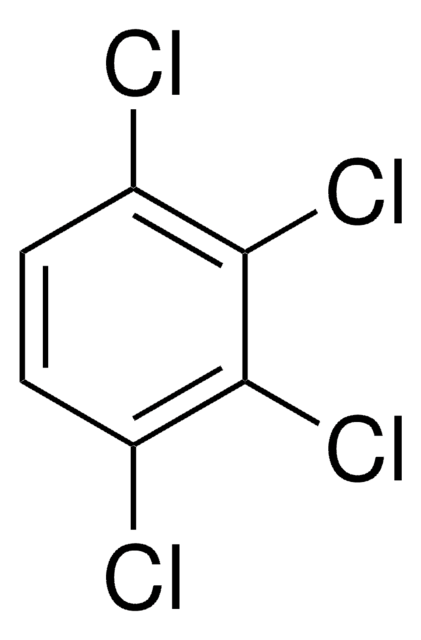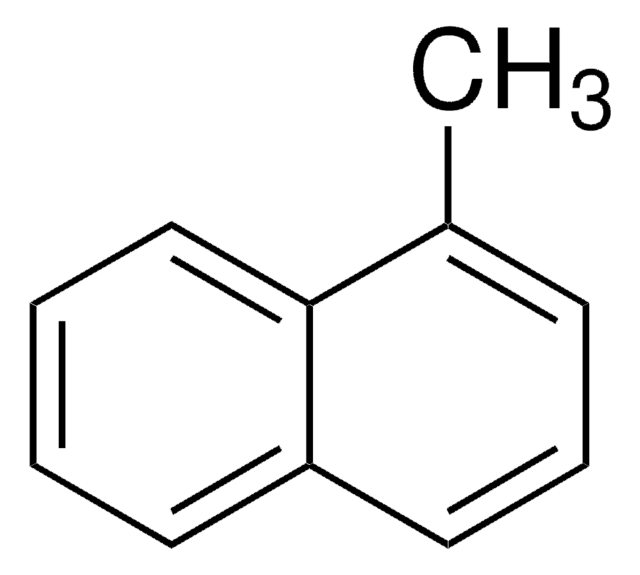36742
1,2,3-Trichlorobenzene
PESTANAL®, analytical standard
About This Item
Recommended Products
grade
analytical standard
Quality Level
vapor density
6.25 (vs air)
vapor pressure
0.07 mmHg ( 25 °C)
product line
PESTANAL®
autoignition temp.
1059 °F
shelf life
limited shelf life, expiry date on the label
expl. lim.
6.6 %
technique(s)
HPLC: suitable
gas chromatography (GC): suitable
bp
218-219 °C (lit.)
mp
51-53 °C (lit.)
application(s)
agriculture
environmental
format
neat
SMILES string
Clc1cccc(Cl)c1Cl
InChI
1S/C6H3Cl3/c7-4-2-1-3-5(8)6(4)9/h1-3H
InChI key
RELMFMZEBKVZJC-UHFFFAOYSA-N
Looking for similar products? Visit Product Comparison Guide
Application
Legal Information
Signal Word
Warning
Hazard Statements
Precautionary Statements
Hazard Classifications
Aquatic Acute 1 - Aquatic Chronic 1 - Skin Sens. 1B
Storage Class Code
11 - Combustible Solids
WGK
WGK 3
Flash Point(F)
260.6 °F - closed cup
Flash Point(C)
127.0 °C - closed cup
Personal Protective Equipment
Choose from one of the most recent versions:
Already Own This Product?
Find documentation for the products that you have recently purchased in the Document Library.
Protocols
US EPA Method 8260 describes the analysis of volatile organic compounds in solid wastes and ground waters. This application illustrates the analysis of many compounds commonly analyzed by this method using purge and trap coupled to GC-MS.
Our team of scientists has experience in all areas of research including Life Science, Material Science, Chemical Synthesis, Chromatography, Analytical and many others.
Contact Technical Service







